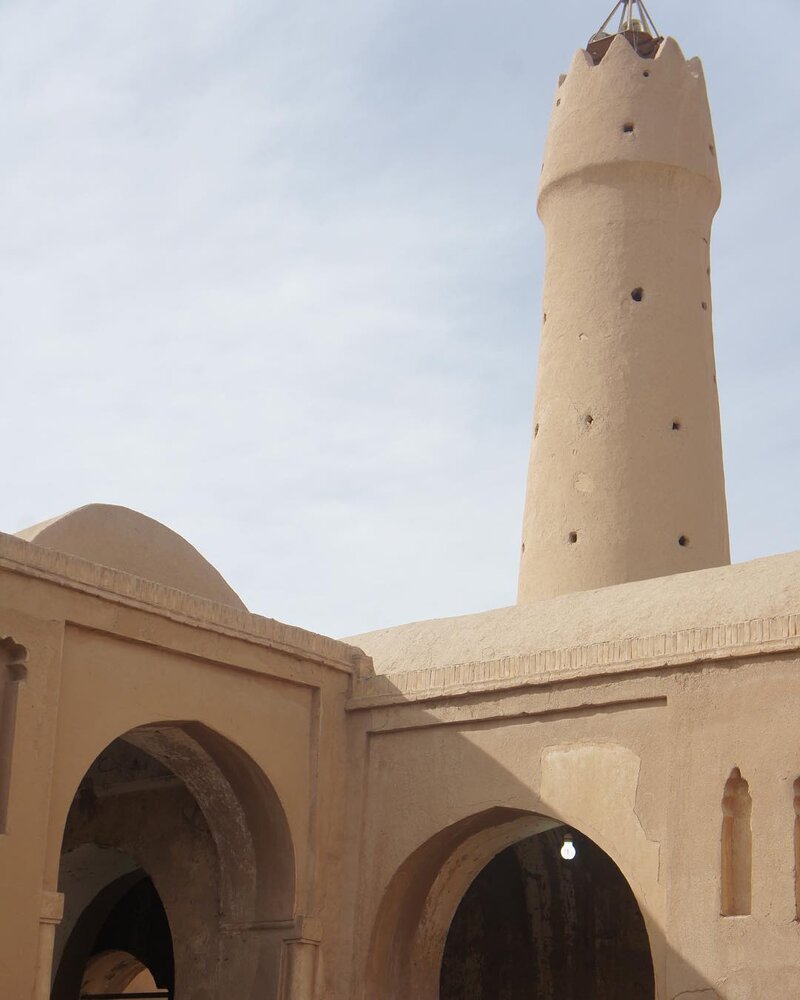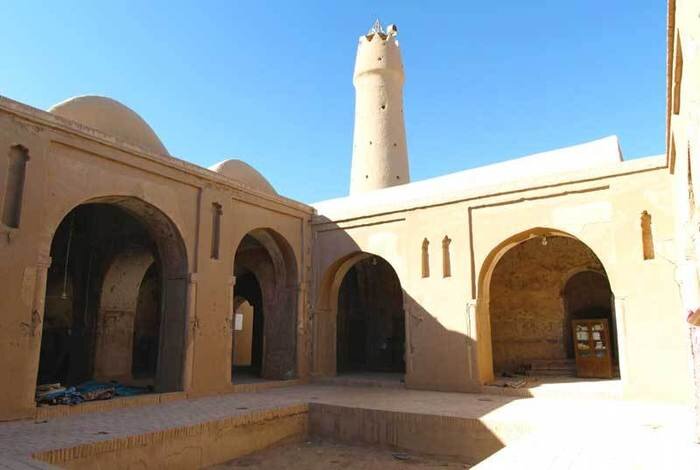TEHRAN –Standing tall in Iran’s Yazd province, Jameh Mosque of Fahraj, which dates over 1400 years, is of great significance as one of the oldest extant mosques in Iran. It represents an important evolutionary stage in mosque construction from very modest materials to wooden roofs on arcades, finally to full scale vaulting with permanent materials.
Some archeologists believe that the congregational mosque is the oldest surviving Islamic structure in the country, being constructed following the conquest of Persia (637–651) by Muslims that put an end to the mighty Sasanian Empire (224–651).
In Islamic countries, Jameh mosque (in Persian Masjed-e Jameh) is referred to as a large center of community worship and a site for Friday prayer services.
Fahraj mosque is located in a town of the same name, some thirty kilometers east of the city of Yazd. Fahraj lies on an old route that connects Yazd to Bafq and it was an important urban settlement in Sassanid times, known by various names such as Mihrpadeen, Mihreez, Fahrashan or Pahreh.
The Jameh Mosque of Fahraj primarily consists of an internal courtyard, vaulted sanctuary and arcades, and a clay minaret which are essentially built of sun-dried, unfired clay tiles and mud bricks. It is largely built of sun-dried, unfired clay tiles and mud bricks. Its modest internal courtyard is lined with clay tiles and contains a now dry central ablution tank.

According to masjed.ir, the internal facades are near symmetrical and consist of three arched bays defined by thick piers, partly relieved by vertical niches. The court’s roofline is uninterrupted and a decorative cornice emphasizes horizontality that is challenged by the mosque’s minaret and arched silhouette of barrel vaults over the jamaat khana (main prayer hall).
The roofing system is made up of five linear vaults oriented east-west, three of which are interrupted by the central courtyard. Two additional vaults orient north-south, and the roof extends to the mosque’s northwest corner. The minaret were added to the mosque later as a lighthouse for caravans around 400 years ago. It features a tapering cylinder with an internal spiral staircase.
The mosque design’s simplicity and lack of ornamentation have denied it the public attention and preservation efforts deserved by a building emblematic of so pivotal a stage in Iranian Islamic architecture and heritage. However, the mosque represents a little documented innovation in Islamic architecture that was soon lost to the dominant four-iwan prototype patronized by the Seljuks in the eleventh century.

Its internal courtyard is lined with clay tiles and contains a now dry central ablution tank. The internal facades are near symmetrical and consist of three arched bays defined by thick piers, partly relieved by vertical niches, according to the Islamic Architecture Community.
In the surrounding area, there are a crumbling castle, a hammam (bathhouse) and an ab-anbar (water reservoir) with four badgirs (wind tower or ventilation shaft) used to catch breezes and funnel them down into a building to cool it.
The central province of Yazd, is referred to as a “don’t miss” destination while traversing Iran. Forests of badgirs (wind catchers), mud-brick houses, atmospheric alleyways and more importantly its hospitable people make it a delightful place to visit.


No comments:
Post a Comment